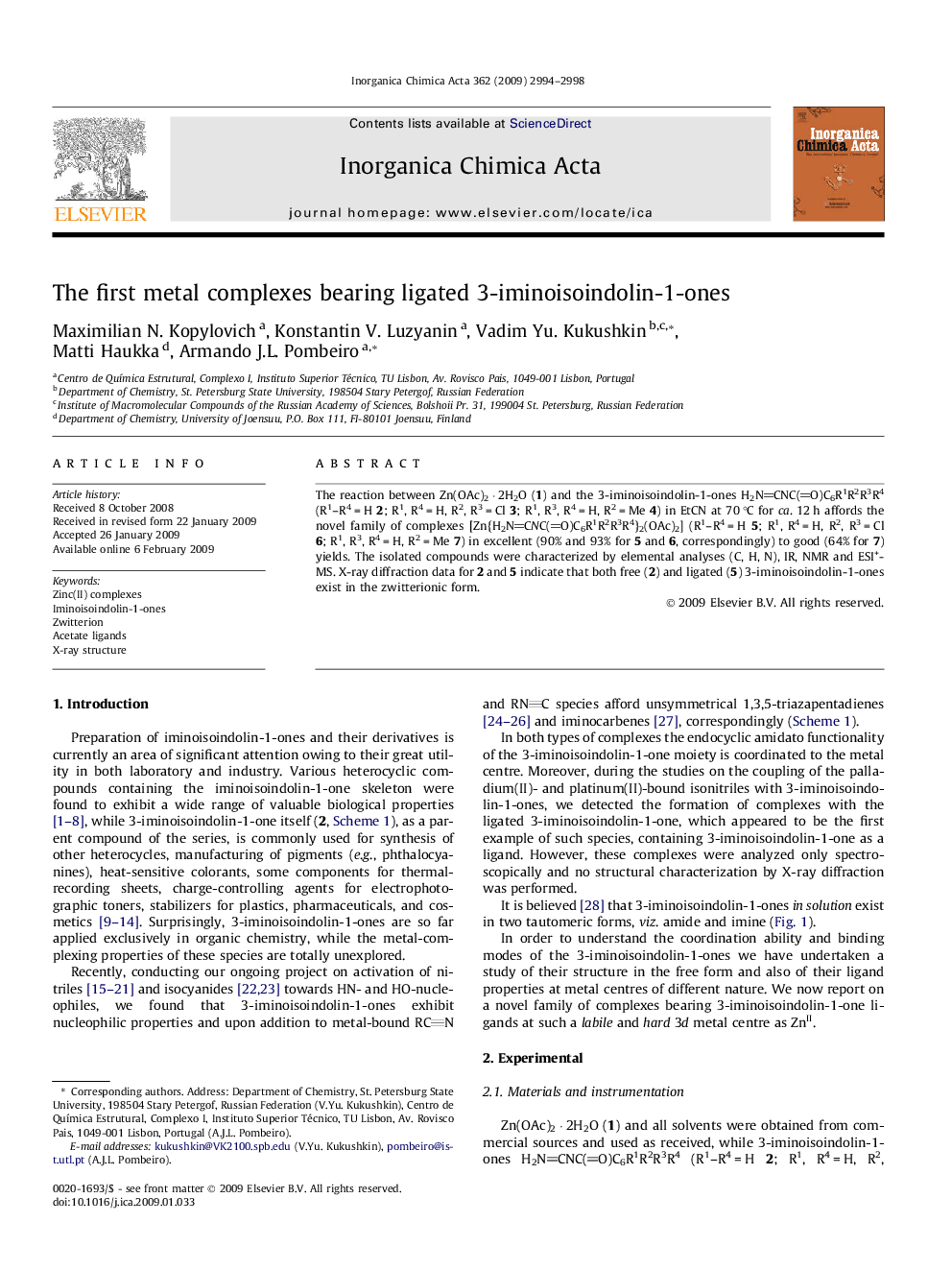| Article ID | Journal | Published Year | Pages | File Type |
|---|---|---|---|---|
| 1308468 | Inorganica Chimica Acta | 2009 | 5 Pages |
The reaction between Zn(OAc)2 · 2H2O (1) and the 3-iminoisoindolin-1-ones H2NCNC(O)C6R1R2R3R4 (R1–R4 = H 2; R1, R4 = H, R2, R3 = Cl 3; R1, R3, R4 = H, R2 = Me 4) in EtCN at 70 °C for ca. 12 h affords the novel family of complexes [Zn{H2NCNC(O)C6R1R2R3R4}2(OAc)2] (R1–R4 = H 5; R1, R4 = H, R2, R3 = Cl 6; R1, R3, R4 = H, R2 = Me 7) in excellent (90% and 93% for 5 and 6, correspondingly) to good (64% for 7) yields. The isolated compounds were characterized by elemental analyses (C, H, N), IR, NMR and ESI+-MS. X-ray diffraction data for 2 and 5 indicate that both free (2) and ligated (5) 3-iminoisoindolin-1-ones exist in the zwitterionic form.
Graphical abstractThe reaction between Zn(OAc)2 · 2H2O (1) and the 3-iminoisoindolin-1-ones H2NCNC(O)C6R1R2R3R4 (R1–R4 = H 2; R1, R4 = H, R2, R3 = Cl 3; R1, R3, R4 = H, R2 = Me 4) in EtCN at 70 °C for ca. 12 h affords the novel family of complexes [Zn{H2NCNC(O)C6R1R2R3R4}2(OAc)2] (R1–R4 = H 5; R1, R4 = H, R2, R3 = Cl 6; R1, R3, R4 = H, R2 = Me 7) in excellent (90% and 93% for 5 and 6, correspondingly) to good (64% for 7) yields. The isolated compounds were characterized by elemental analyses (C, H, N), IR, NMR and ESI+-MS. X-ray diffraction data for 2 and 5 indicate that both free (2) and ligated (5) 3-iminoisoindolin-1-ones exist in the zwitterionic form.Figure optionsDownload full-size imageDownload as PowerPoint slide
